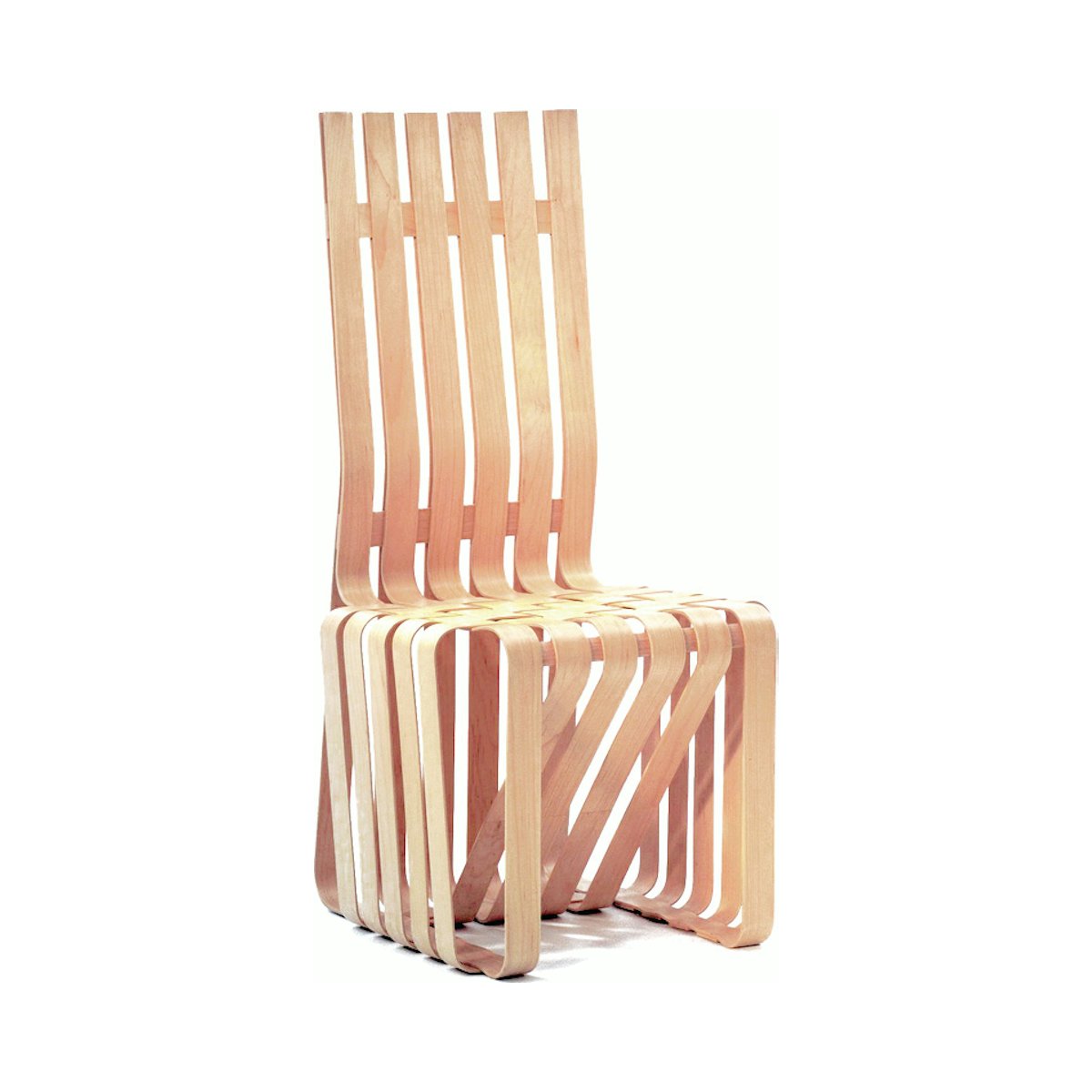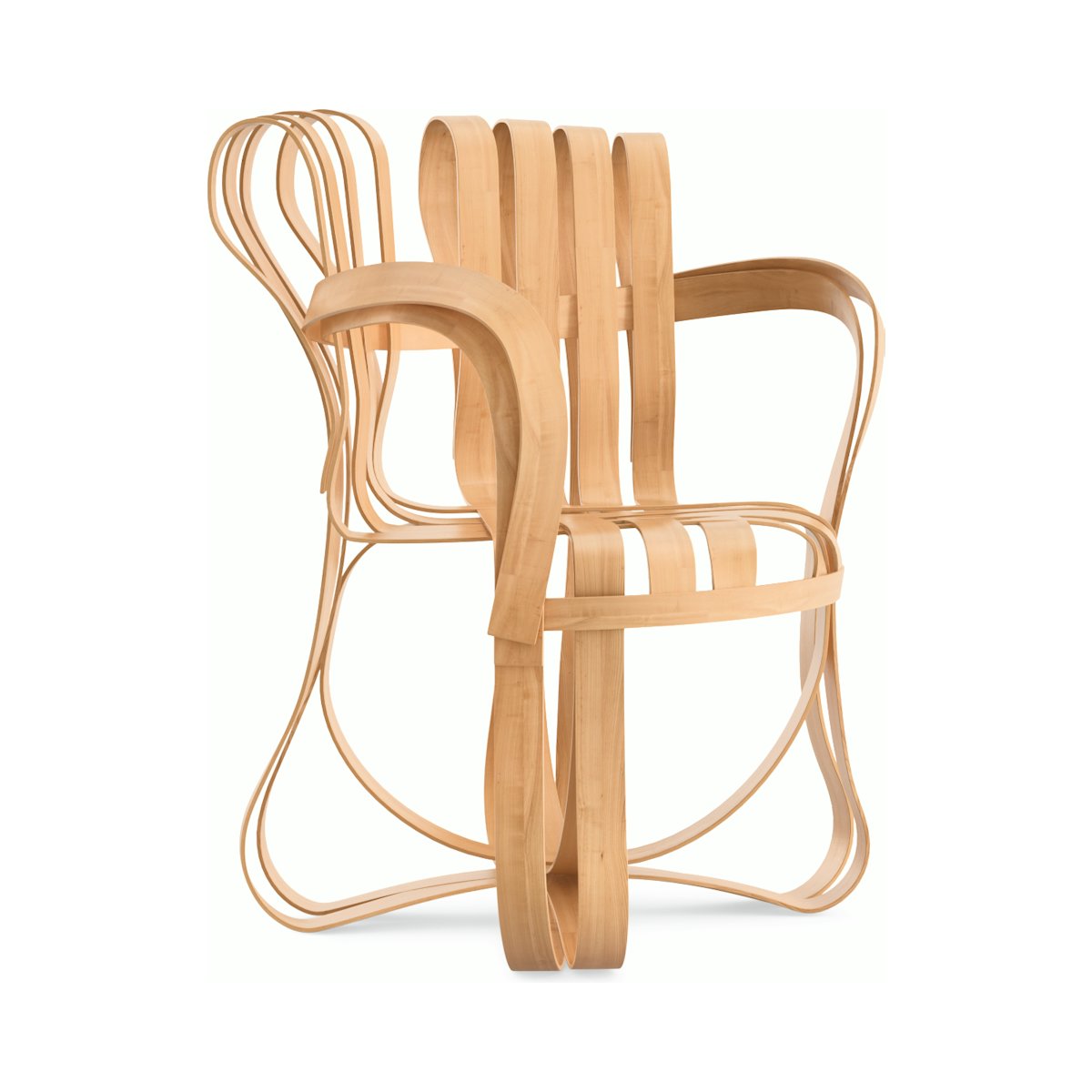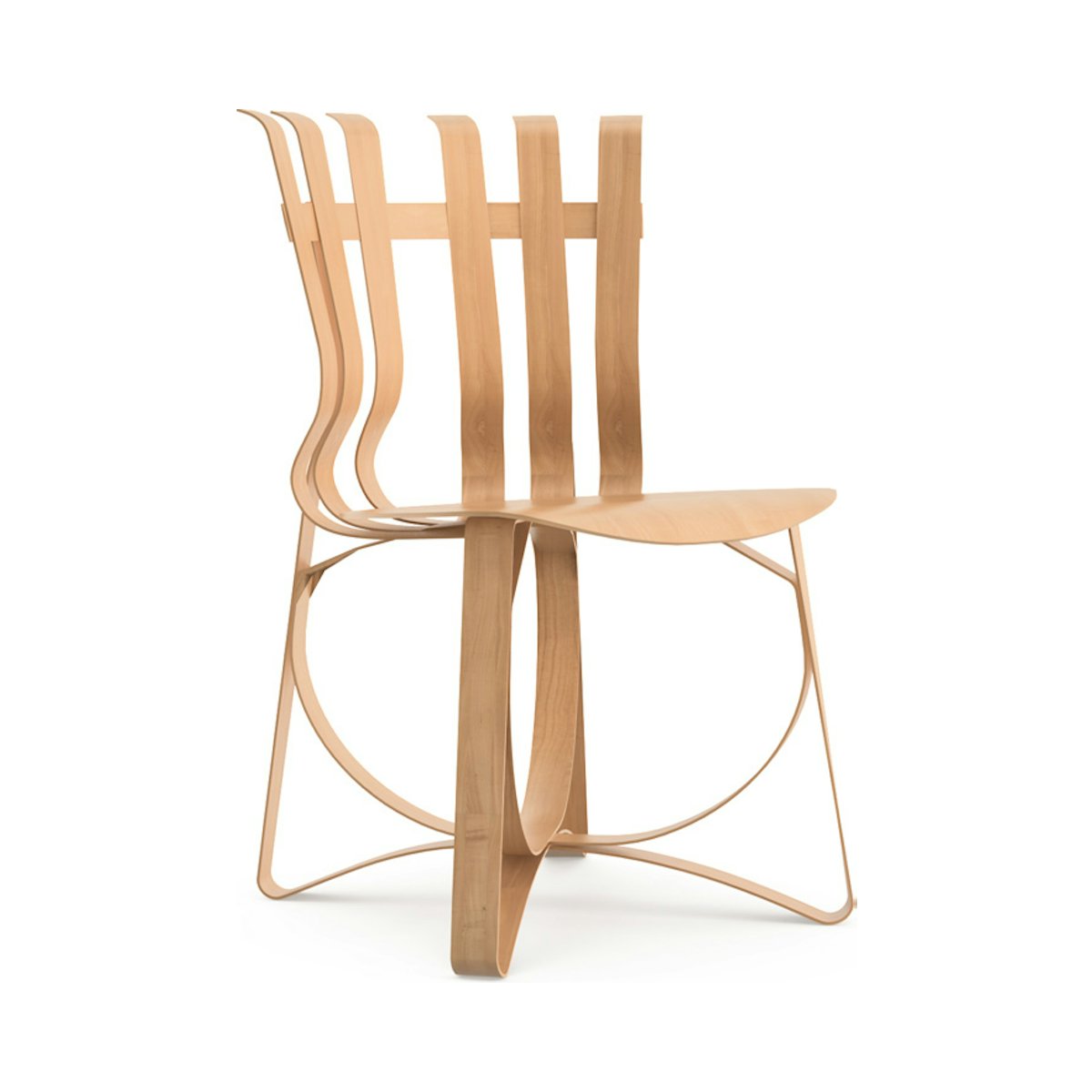One of the most celebrated architects of the second half of the 20th century, Frank Gehry has made a career of pushing boundaries and questioning what architecture can do. After studying at UCLA, Gehry pursued his graduate studies at Harvard's Graduate School of Design. He has served on the faculty at Harvard and Yale, and is a Fellow of the American Institute of Architects. Gehry was awarded the prestigious Pritzker Architecture Prize in 1972.
His most famous buildings include the Guggenheim Museum in Bilbao, Spain, the Walt Disney Concert Hall in Los Angeles, the Vitra Design Museum in Weil am Rhine, Germany and the Dancing House in Prague, Czech Republic. His collection of cardboard furniture, Easy Edges, set a new precedent for the use of materials in furniture making.
Gehry created his bentwood furniture collection for Knoll in 1992. Inspired by the surprising strength of a wooden bushel basket, he sought to fully integrate material and design, creating a structurally and aesthetically light masterpiece. He explained:
“…all bentwood furniture until now has relied on a thick and heavy main structure and then an intermediary structure for the seating. The difference in my chairs is that structure and the seat are formed of the same incredible lightweight slender wood strops which serve both functions. The material forms a single and continuous idea. What makes this all work and gives it extraordinary strength is the interwoven, basket-like character of the design.”
From an interview originally run in Architectural Record (c) February 1992, The McGraw-Hill Companies. www.architecturalrecord.com.
His most famous buildings include the Guggenheim Museum in Bilbao, Spain, the Walt Disney Concert Hall in Los Angeles, the Vitra Design Museum in Weil am Rhine, Germany and the Dancing House in Prague, Czech Republic. His collection of cardboard furniture, Easy Edges, set a new precedent for the use of materials in furniture making.
Gehry created his bentwood furniture collection for Knoll in 1992. Inspired by the surprising strength of a wooden bushel basket, he sought to fully integrate material and design, creating a structurally and aesthetically light masterpiece. He explained:
“…all bentwood furniture until now has relied on a thick and heavy main structure and then an intermediary structure for the seating. The difference in my chairs is that structure and the seat are formed of the same incredible lightweight slender wood strops which serve both functions. The material forms a single and continuous idea. What makes this all work and gives it extraordinary strength is the interwoven, basket-like character of the design.”
From an interview originally run in Architectural Record (c) February 1992, The McGraw-Hill Companies. www.architecturalrecord.com.

4
Results
4
Results
View







